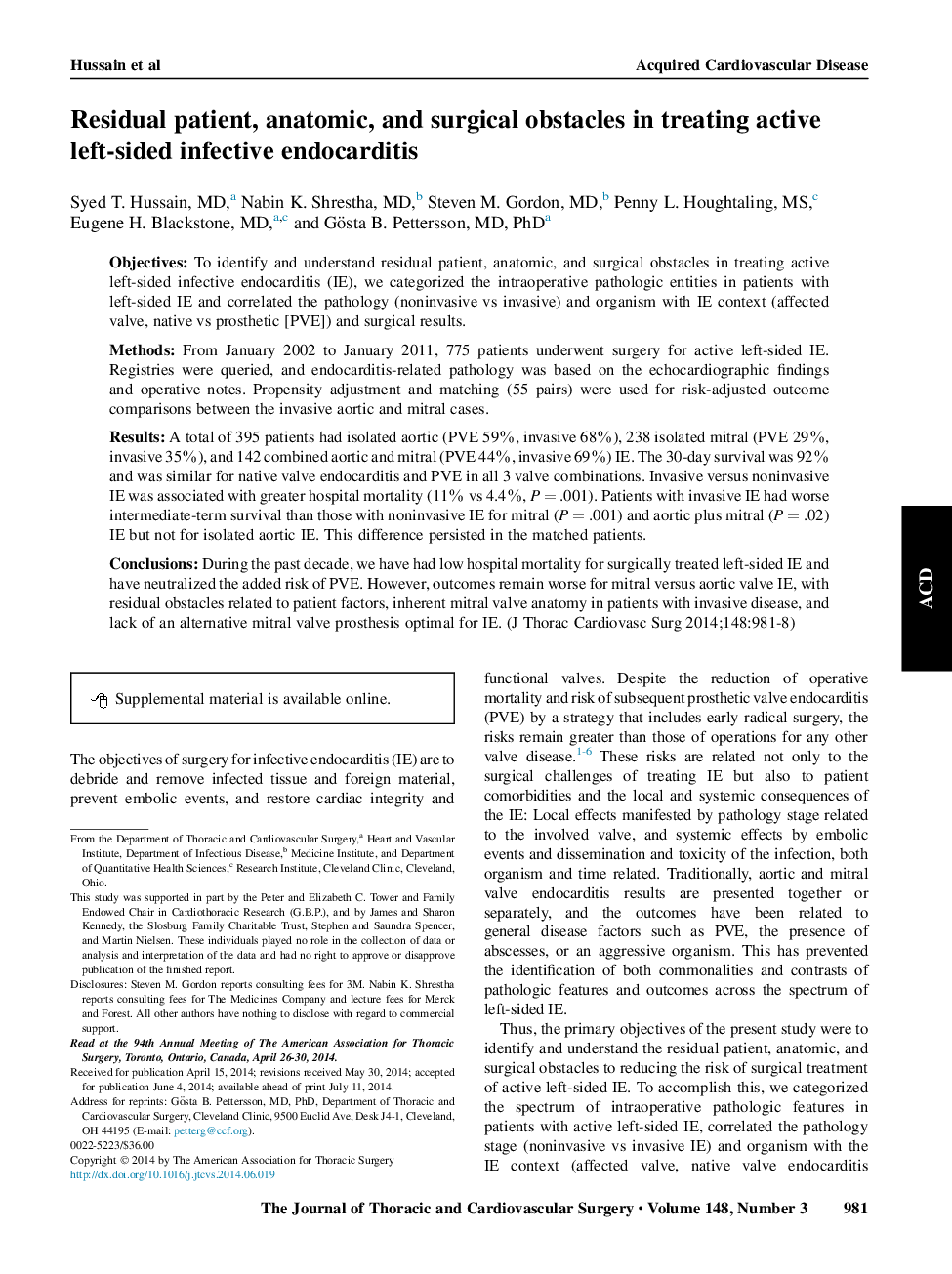| Article ID | Journal | Published Year | Pages | File Type |
|---|---|---|---|---|
| 5989322 | The Journal of Thoracic and Cardiovascular Surgery | 2014 | 12 Pages |
ObjectivesTo identify and understand residual patient, anatomic, and surgical obstacles in treating active left-sided infective endocarditis (IE), we categorized the intraoperative pathologic entities in patients with left-sided IE and correlated the pathology (noninvasive vs invasive) and organism with IE context (affected valve, native vs prosthetic [PVE]) and surgical results.MethodsFrom January 2002 to January 2011, 775 patients underwent surgery for active left-sided IE. Registries were queried, and endocarditis-related pathology was based on the echocardiographic findings and operative notes. Propensity adjustment and matching (55 pairs) were used for risk-adjusted outcome comparisons between the invasive aortic and mitral cases.ResultsA total of 395 patients had isolated aortic (PVE 59%, invasive 68%), 238 isolated mitral (PVE 29%, invasive 35%), and 142 combined aortic and mitral (PVE 44%, invasive 69%) IE. The 30-day survival was 92% and was similar for native valve endocarditis and PVE in all 3 valve combinations. Invasive versus noninvasive IE was associated with greater hospital mortality (11% vs 4.4%, P = .001). Patients with invasive IE had worse intermediate-term survival than those with noninvasive IE for mitral (P = .001) and aortic plus mitral (P = .02) IE but not for isolated aortic IE. This difference persisted in the matched patients.ConclusionsDuring the past decade, we have had low hospital mortality for surgically treated left-sided IE and have neutralized the added risk of PVE. However, outcomes remain worse for mitral versus aortic valve IE, with residual obstacles related to patient factors, inherent mitral valve anatomy in patients with invasive disease, and lack of an alternative mitral valve prosthesis optimal for IE.
